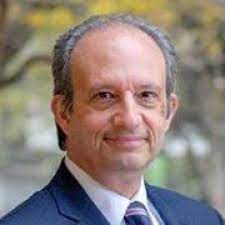Part 3 of 3 Parts (Please read Parts 1 and 2 first)
Exotic metals
Nuclear containment vessels for nuclear fission reactors are made of a variety of exotic rare metals that control and contain the nuclear fission reaction. Hafnium acts as a neutron absorber, beryllium acts as a neutron reflector, zirconium is used as cladding for the fuel rods and niobium alloys with steel to protect it from forty to sixty year of neutron embrittlement. Mining and refining these metals raise concerns about cost, sustainability and environmental impact. In addition, there are many industrial processes that compete for these metals. Hafnium is used in microchips and beryllium is also needed by the semiconductor industry. If a nuclear reactor is being constructed every day somewhere in the world, the global supply of these exotic metals needed to build containment vessels would quickly be depleted and there would be a mineral resource crisis. This is a new argument that Abbott raises. It places resource limits on all future-generation nuclear reactors.
As Abbott mentions, many of these same problems would plague fusion reactors in addition to fission reactors even though commercial nuclear fusion power is still decades in the future.
Of course, there are not that many nuclear power advocates who are calling for a nuclear utopia in which nuclear fission power supplies all the world’s energy needed. However, many nuclear advocates do suggest that the world should try to produce one terawatt of world power from nuclear energy. This may be feasible in the short run. On the other hand, if Abbott’s numbers for fifteen terawatts are divided by fifteen, even one terawatt of nuclear power production is barely feasible. Based on these estimations, Abbott questions whether or not nuclear fission power generation can even be scaled up to one terawatt. He suggests that the same investment would be better spent on technologies that are fully scalable.
Abbott said, “Due to the cost, complexity, resource requirements, and tremendous problems that hang over nuclear power, our investment dollars would be more wisely placed elsewhere. Every dollar that goes into nuclear power is dollar that has been diverted from assisting the rapid uptake of a safe and scalable solution such as solar thermal.”
Solar thermal devices harness the energy of the Sun to produce heat that creates steam that turns generators to generate electricity. Solar thermal technology avoids many of the scalability problems that trouble the nuclear power industry. A solar thermal farm requires about the same amount of land area needed for an equivalent nuclear power plant infrastructure. However, unlike nuclear power, solar thermal farms can be sited in unused desert areas. It is also constructed from safer and more abundant materials. The most import thing about solar thermal farms is that they can be scaled to produce not just fifteen terawatts but hundreds of terawatts in that is ever needed.
However, the biggests problem with solar thermal technology is cloudy days and nighttime. Abbott is planning to research a variety of storage solutions for this intermittency problem. This problem also plagues other renewable energy solutions such as wind power. During the transition period of the near future, Abbott suggests that solar thermal farms and natural gas is the path toward building a practical future energy infrastructure.
